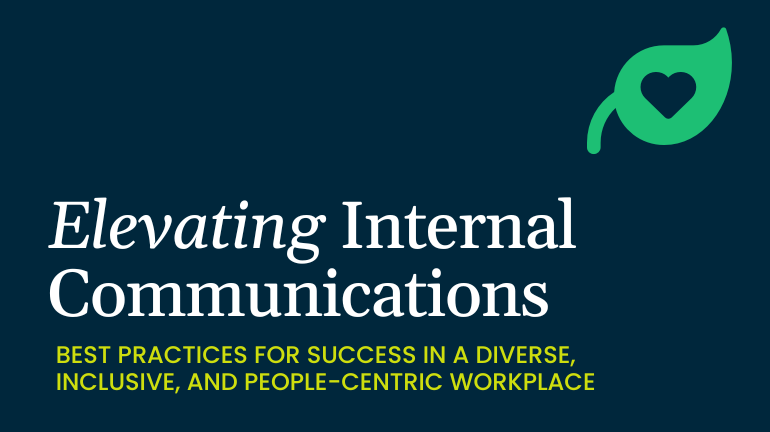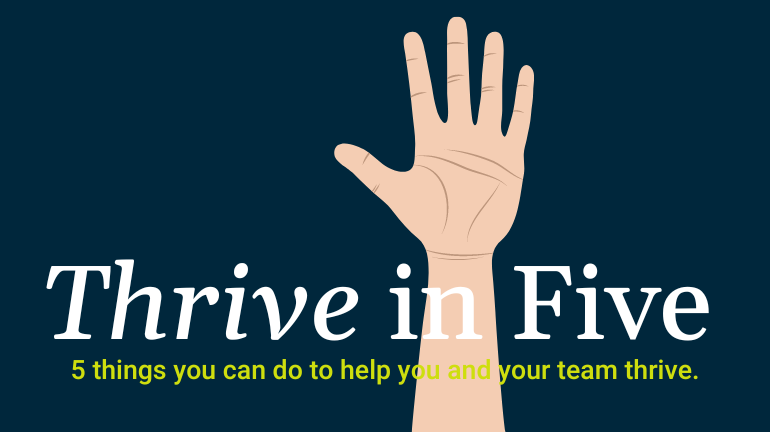Elevating Internal Communications: Best Practices for Success in a Diverse, Inclusive, and People-Centric Workplace

Picture this: You’re in charge of the launch of an important new project. You’ve done your research, built a rock-solid project plan, and put together a top-notch team to get everything off the ground. As the days and weeks go by, however, you start to notice something. Your team members don’t seem to know or trust each other, they often seem to neglect or misunderstand key parts of your project strategy, and they’re not coming up with the innovative ideas and solutions you expected of them. Collaboration, team morale, and project momentum are declining by the day.
What’s gone wrong? You may have overlooked a foundational component: internal communications.
Effective internal communications serve as the cornerstone of organizational success, fostering collaboration, ensuring strategic alignment, and playing a pivotal role in promoting diversity, equity, inclusion, and accessibility (DEIA). In this blog post, we’ll explore how taking a human-centered approach can elevate your internal communications strategy and create a thriving team culture.
Establish Clear Objectives with DEIA in Mind
Any effective strategy, communications or otherwise, starts with a clear understanding of what you’re trying to accomplish. In other words, set clear objectives—and then tell people about them!
When we’re starting to set objectives, it can be tempting to try to craft an extensive list of aims and goals. After all, we want our teams and our companies to dream big! But trying to accomplish too many objectives at once can lead to distraction and increase the likelihood of important things falling through the cracks. To keep your team focused and agile, try to limit your objectives to three to five.
Once your objectives are established, you need to communicate them to your team early and often. As humans, we retain information more effectively when we hear it multiple times—so don’t be afraid to feel repetitive! When you first introduce your objectives, allow time for questions and feedback to ensure understanding and increase buy-in.
Finally, when setting and communicating your objectives, make sure they are aligned with DEIA principles. How will your objectives, and the planned communication efforts surrounding them, promote or support diversity, equity, inclusion, and accessibility within your project team or larger organization? How will you ensure the voices of all your team members or employees are heard, particularly those from marginalized communities? Do your intended objectives present any challenges to your organization’s overall DEIA initiatives and goals? By integrating DEIA considerations from the outset, you can cultivate a more inclusive and equitable team culture.
Know Your Audience
We all learn, communicate, and work in different ways. Some people thrive in highly collaborative settings like group brainstorming meetings, while others need time alone to flesh out their ideas. Some of us learn best through videos or live trainings; others absorb information most effectively through reading. For some, mornings are their most productive times, while others are at their most energized and creative later in the day.
Do your team members and employees prefer to receive communications through email or on Teams or Slack channels? Do they find group chats energizing or distracting? How do they like to brainstorm, and when do they feel like they do their best work? Take the time to get to know how your team members prefer to communicate, and tailor your messaging and approach to accommodate these preferences as much as possible. Design a combination of channels and approaches—email, Teams or Slack, newsletters, team meetings or town halls—to ensure every single team member is receiving at least the most critical information in ways that are effective for them. This will increase productivity and efficiency and reduce employee burnout.
In addition, take the time to recognize and appreciate your team’s differences in background, identity, and experiences. This will enable you to further tailor your communications so they truly resonate with various groups, ensuring inclusivity and relevance across the organization.
Promote Two-Way Communication for Collaboration and Inclusion
Open dialogue, feedback, and collaboration are all key pieces of effective internal communications. Team members need to feel safe and encouraged to share their perspectives, ideas, and concerns. By providing inclusive two-way communications channels, you will build trust with your team and allow for the transparent flow of ideas. These channels could include Slack or Teams channels and chats and regular team meetings with time reserved for Q&A and open discussion.
More introverted team members may feel more comfortable discussing their ideas or challenges one-on-one. Establishing an open-door policy, or even set “office hours” when team members can come and discuss their work and any challenges they might be facing, goes a long way in ensuring these quieter voices are heard.
All of these two-way channels have the added benefits of allowing you to more actively listen to diverse voices, show that you value their contributions, and create opportunities for meaningful participation and engagement.
Provide Consistent and Transparent Updates
You rely on your team for productivity, innovation, and high-quality results. In turn, your team relies on you to tell them about important developments, initiatives, and organizational changes. Make it a point to provide regular updates via newsletters, town hall meetings, email, and team briefings, and ensure transparency and clarity in your messaging. This transparency will help you foster trust and demonstrate your commitment to inclusivity and open communication.
Remember, less is not more when it comes to communications!
Integrate Team-Building Initiatives
When we get to know our colleagues and teammates on a deeper level, we are better able to relate to them, find commonalities, communicate, and work with them effectively. Team-building activities can strengthen our working relationships, create a more supportive team culture, and foster a greater sense of belonging. These can include quick ice-breaker activities during meetings, in-person or virtual social events, and cross-functional collaboration opportunities to promote camaraderie and collaboration across teams.
Not sure how to get your team-building initiatives off the ground? Your team members themselves are a great place to start! Establish a voluntary employee engagement group that helps plan social events or use Microsoft Forms to collect feedback on the types of team-building activities your team would most enjoy. Most importantly, keep these activities low-pressure, informal, and fun!
Keep People Front and Center
At the end of the day, remember that you’re communicating with people. We all want to understand the world around us and feel understood, accepted, and supported in return.
Adopting a human-centered approach to communications means prioritizing empathy, authenticity, and understanding. Use storytelling, empathy-driven narratives, and personal anecdotes to connect with people on a human level. Consider the emotional and psychological well-being of your team members and employees when crafting messages and delivering communications, and vet all communications through a DEIA lens.
And remember that listening is just as, if not more, important than speaking!
When you keep the people at the front and center of your communications, you can foster collaboration, strengthen relationships, and empower employees to thrive and succeed together.
ELEVATING INTERNAL COMMUNICATIONS INFOGRAPHIC:




